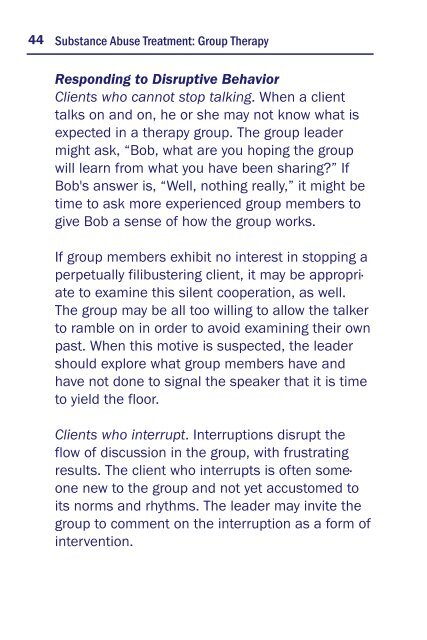Quick Guide for Clinicians - SAMHSA Store - Substance Abuse and ...
Quick Guide for Clinicians - SAMHSA Store - Substance Abuse and ...
Quick Guide for Clinicians - SAMHSA Store - Substance Abuse and ...
You also want an ePaper? Increase the reach of your titles
YUMPU automatically turns print PDFs into web optimized ePapers that Google loves.
44 <strong>Substance</strong> <strong>Abuse</strong> Treatment: Group TherapyResponding to Disruptive BehaviorClients who cannot stop talking. When a clienttalks on <strong>and</strong> on, he or she may not know what isexpected in a therapy group. The group leadermight ask, “Bob, what are you hoping the groupwill learn from what you have been sharing?” IfBob's answer is, “Well, nothing really,” it might betime to ask more experienced group members togive Bob a sense of how the group works.If group members exhibit no interest in stopping aperpetually filibustering client, it may be appropriateto examine this silent cooperation, as well.The group may be all too willing to allow the talkerto ramble on in order to avoid examining their ownpast. When this motive is suspected, the leadershould explore what group members have <strong>and</strong>have not done to signal the speaker that it is timeto yield the floor.Clients who interrupt. Interruptions disrupt theflow of discussion in the group, with frustratingresults. The client who interrupts is often someonenew to the group <strong>and</strong> not yet accustomed toits norms <strong>and</strong> rhythms. The leader may invite thegroup to comment on the interruption as a <strong>for</strong>m ofintervention.
















